Opinion & Analysis
GolfWRX Fitters Survey 2018: The ultimate golf-fitting survey

Recently, we asked some of the top fitters in the country burning questions that golfers have about golf club fitting. Their responses were eye-opening. Top fitters from the following fitting locations participated in this extensive survey:
- Club Champion
- Felix Clubworks
- Joe Kwok Golf
- Miles of Golf
- Modern Golf
- 2nd Swing Golf
- The Tour Van
- True Spec Golf
Thank you to all of the fitters who took the time to help us with this survey, and took the time to answer.
Here are the questions we asked, and the answers from the top golf fitters in the nation.
1) What percentage of golfers need more loft on their driver?

2) What percentage of golfers need LESS loft on their driver?
- Average answer: 35 percent
3) What percentage of golfers play shafts that are too stiff?
- Average answer: 50 percent
4) What percentage of golfers play shafts that are too whippy?
- Average answer: 35 percent
5) What percentage of golfers need to play with more forgiving irons?
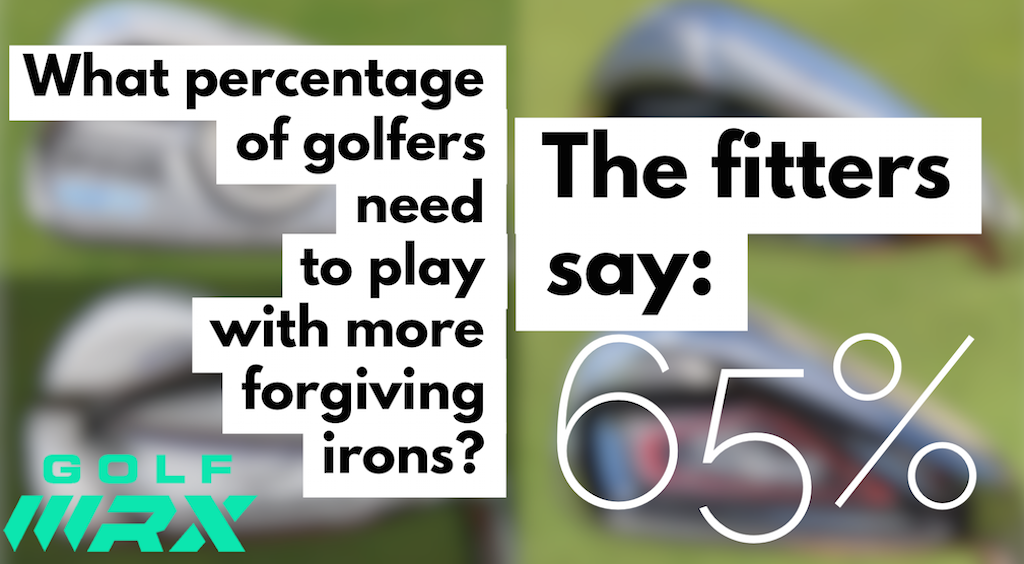
6) What percentage of golfers need to play with LESS forgiving irons?
- Average answer: 14 percent
7) What percentage of golfers play the wrong wedge grind?
- Average answer: 64 percent
8) What percentage of golfers have an adjustable driver that’s setup incorrectly for their swing?

9) What’s the one part of the bag that golfers would benefit most from after a proper fitting?
- Driver: 8.33 percent of answers
- Fairway wood/hybrid: 0 percent
- Irons: 0 percent
- Wedges: 16.67 percent
- Putter: 75 percent
10) With the choice of only one to fill a yardage gap, should a high-handicap golfer choose a fairway wood, hybrid, or driving iron?

11) What will lower scores more quickly, a fitting or a lesson?
- Fitting: 75 percent
- Lesson: 25 percent
12) In your own words, is grip size important to the fitting process?
- Yes, but it can be tricky. I think incorrect sizing can cause a player to “hang on” to the club or limit their release. At the end of the day, the player needs to have a grip that gives them the “warm and fuzzy” feeling. If the club feels good in their hands, they are more likely to produce a better swing.
- Yes, grip size influences grip pressure. Grip pressure can influence face angle, club head speed, and other factors that directly lead to ball flight. Grip style may be mostly player preference, but grip size should be constant and correct on all your full swing clubs.
- Yes, it can have a dramatic effect on performance depending on the circumstances.
- Grip size is important. Having a grip that allows you to feel more comfortable or relaxed results in better shots.
- Grip size is important because it is the only thing that we touch while swinging a golf club. Traditional grip sizing metrics might be a little out of date. I do believe golfers have a misconception on what grip size does to ball flight (oversized grips fade/undersized grips draw). Everyone is unique and you can see different results by testing size.
- For sure it is important. Over 75 percent of my fittings play the wrong size grips.
- Very, but no proof that hand size measurements are exactly what the player needs.
- Yes, it is the only connection to the club.
- Very important.
- Yes it is extremely important. It will allow you to hold on to the club with the proper pressure and still maintain control. Also grip size can help you let your hands be more active to help square the face or slow them down to help slow down a draw.
- Of course. Though the traditional trend that big grips prevent hooks and little grips prevent slices is a very broad and inaccurate generalization. Grip fitting is very important and has a huge effect on swing weighting.
- Somewhat. It depends on the player and their tendencies… doesn’t have to be spot on, but needs to be close.
13) In your own words, how often should golfers change wedges?
- Depends on how much they play, but an avid golfer who practices a few days a week should likely switch once a year. Most tour players switch 3-4 times per/year.
- When distance and spin are noticeably affected.
- Once every 100-150 rounds
- Every 50 rounds or even less. For golfers who practice a lot, even sooner.
- Depends on how the golfer enjoys the game. Someone who is playing in local events or club events would usually want pure performance. In that instance, I would change out what ever club they use around the green every 75-100 rounds.
- For those playing 50+ rounds a year, changes wedges every other year can help consistency with short pitches & chips.
- Every year.
- Depends on how much golf they play, but every year is a good time frame.
- Every 100 rounds + 40 Range sessions.
- Depends on how many rounds they play. Just keep an eye on the grooves and as long as they are playing the correct bounce.
- When the groove texture on the face is no longer effective, or if their playing conditions or angle of attack change significantly, which would change the bounce and grinds they need to play.
- When their wedge stops hitting the shots they intended to hit.
14) In your own words, how often should golfers change drivers?
- If launch, spin and speed numbers are as good, they may not need to upgrade. In general, I’d say they should entertain new technology every 18-24 months.
- When a player can see evidence of improved ball flight, consistency, or feel and upgrade is appropriate. Until then, keep what you have and work with a fitter to determine what changes will benefit your tee game.
- Only when they find one that can beat what they have.
- To have more noticeable gains, every 2-3 years. Technology is improving way too fast to not keep up.
- If they are playing something from 2012 or newer, they should only be looking to switch if their ball speed, launch or spin are out of whack.
- As a fitter, if I am able to maximize ball speed, optimize launch angle & the spin rate it could be every year. Most often I find 85-90 percent of players are able to gain accuracy & distance when taking part in a fitting.
- 3-year check up.
- When they find something that is an improvement.
- Every 2500-3000 hits.
- Every 2 to 3 years if they were originally fitted correctly.
- Only after testing and fitting all available options to see if it is better than their current driver.
- When performance starts decay, or their swing has changed enough that they aren’t hitting their desired shot.
15) In your own words, how often should golfers change irons?
- Similar to the wedge answer, it really depends on how frequently they play/practice. Assuming all things are equal, a player should entertain new irons every 2/3 years.
- When distance and ball flight become unreliable, and as a result your confidence in hitting greens suffers, it’s time to look at different irons. Consider set make-up and even combo sets to improve long and short irons appropriately. Look for consistency, and stopping power, not just distance.
- Depends on how often the golfer plays, but about every two years, or once significant wear is appearing on the face and effecting backspin.
- Most golfers should change every 4-5 years.
- Tournament players every 3 years Competitive golfers 5 years. Weekend warrior every 10 years.
- Depends on what the player is looking for. If they want distance over accuracy, it can be done. If they are trying to gain accuracy, that can me a bit more of a challenge, but I’d suggest every other year is a good place to start.
- 2-year check up; irons are changing quicker than drivers.
- Grooves wear out after a season or 2, or when they find something that is an improvement.
- 150-200 rounds.
- Again depends on how many rounds they play and how their game changes, but I would say 3 to 5 years.
- Only after testing and fitting all available options of irons and shafts and identifying which could be better than what they currently play.
- When performance starts decay, or their swing has changed enough that they aren’t hitting their desired shot.
16) In your own words, what is the biggest mistake golfers have in their bag when they come to you for a fitting?
- Set makeup. Often times players arrive with the wrong configuration of golf clubs for their game.
- Too many clubs that go a similar distance. Either too many head covers or too many longer irons. Often too much neglect for wedges and putter design.
- Driver shafts that are too long, irons with incorrect lie angles, and too many clubs that do the same thing in the top of their bag.
- Most golfers are typically playing one to two longer irons vs having more hybrids in their bag.
- Typically they have clubs that just aren’t useful. Usually you will find 3 clubs in the bag that all carry the same distance. Most of my fittings never have had a gapping analysis. When you can show them how everything carries and how everything stops, it is eye opening for them and helps build a set where all the clubs have a purpose.
- Too many long clubs such as fairway woods or hybrids. Many would shoot lower scores by taking out a low lofted fairways and add a wedge.
- Long irons.
- Loft and lie gapping.
- Loft selections on their wedges.
- Gapping issues, clubs that are similar, not having clubs that help them correctly for their misses, trying to match every club from the same OEM.
- Set makeup, and a set that is not built consistently.
17) In your own words, when is swing weight incorporated into the fitting process?
- Throughout.
- Feel and tempo changes.
- All the time with every club. It is vital for feel and making the golf club perform properly!
- Throughout the entire process… from start to finish it needs to be considered.
- From the start.
- The player will initially give you feedback when you are comparing current vs new. We find swing weight is an important part of the process.
- Great question… only if my customer seems to very tech-y or if we go longer or shorter than standard. Most OEM’s do a wonderful job with swing weight.
- Not always a specific time. Would depend on which club we are using. The biggest thing is during the fitting process when you find the setup that works is to make sure that the build matches those specs.
- Swing weight is a tough road to go down. Most players can adapt to how different clubs feel without discussing why. Once you start going into a lot of detail as to why or how swing weight is changed it becomes more complicated then it needs to be. I would say that swing weight is discussed about 25 percent of the time.
- Swing weight should be considered during the entire process. The fitter should be looking for constant feedback on how the weight of the club feels.
- Once the winning combination of head, shaft, lie and loft are established. Swing weight can help create confidence in feel, and consistent swing weights help players replicate their swing and tempo from club to club.
- Swing weight is a result of the overall fitting process. There are too many variables to mention that can influence swing weight.
18) In your own words, what are the signs that a golfer has the wrong sole width on their irons?
- If the club doesn’t go through the ground properly, typically the club will stick in the ground.
- Hit location is consistently high or low on the face. Turf interaction has too much bearing on the ball flight.
- The sound of impact will be off, often times sounding muted or heavy. A low flight despite a wide sole.
- The most telling sign is turf interaction. Swing speed with Angle of Attack tell me a lot. Slower and more shallow players can benefit a lot from more width.
- If the set is more experienced, you can show them the wear patterns on the old set. When I start talking about sole widths/bounce of irons and how it can change the contact point on face, I will usually start talking about wedges. Most golfers understand why is important in wedges but do not realize that the same applies to irons.
- If they struggle getting the ball in the air or we see several shots being hit heavy or fat. Also depends on turf conditions.
- Turf interaction and impact location (launch/spin).
- How high or low on the face.
- Attack angle, divot and trajectory are producing inconsistent distance control.
- When their attack angle is too steep or shallow. Finding out what course conditions they play mostly. Bad ball position.
- Improper turf interaction and ball contact.
- Inconsistency at impact.
- LIKE273
- LEGIT31
- WOW2
- LOL3
- IDHT2
- FLOP3
- OB1
- SHANK20
19th Hole
Vincenzi’s 2024 PGA Championship betting preview: Rising star ready to join the immortals at Valhalla

The second major of the 2024 season is upon us as the world’s best players will tee it up this week at Valhalla Golf Club in Louisville, Kentucky to compete for the Wanamaker Trophy.
The last time we saw Valhalla host a major championship, Rory McIlroy fended off Phil Mickelson, Henrik Stenson, Rickie Fowler and the creeping darkness that was descending upon the golf course. The Northern Irishman had the golf world in the palm of his hand, joining only Tiger Woods and Jack Nicklaus as players who’d won four major championships by the time they were 25 years old.
Valhalla is named after the great hall described in Norse mythology where the souls of Vikings feasted and celebrated with the Gods. The course is a Jack Nicklaus-design that has ranked among Golf Digest’s “America’s 100 Greatest Courses” for three decades.
Valhalla Golf Club is a par-71 measuring 7,542 yards with Zoysia fairways and Bentgrass greens. The course has rolling hills and dangerous streams scattered throughout and the signature 13th hole is picturesque with limestone and unique bunkering protecting the green. The 2024 PGA Championship will mark the fourth time Valhalla has hosted the event.
The field this week will consist of 156 players, including 16 PGA Champions and 33 Major Champions.
Past Winners of the PGA Championship
- 2023: Brooks Koepka (-9) Oak Hill
- 2022: Justin Thomas (-5) Southern Hills
- 2021: Phil Mickelson (-6) Kiawah Island
- 2020: Collin Morikawa (-13) TPC Harding Park
- 2019: Brooks Koepka (-8) Bethpage Black
- 2018: Brooks Koepka (-16) Bellerive
- 2017: Justin Thomas (-8) Quail Hollow
- 2016: Jimmy Walker (-14) Baltusrol
- 2015: Jason Day (-20) Whistling Straits
- 2014: Rory McIlroy (-16) Valhalla
In this article and going forward, I’ll be using the Rabbit Hole by Betsperts Golf data engine to develop my custom model. If you want to build your own model or check out all of the detailed stats, you can sign up using promo code: MATTVIN for 25% off any subscription package (yearly is best value).
Key Stats For Valhalla
Let’s take a look at five key metrics for Oak Hill to determine which golfers boast top marks in each category over their past 24 rounds.
1. Strokes Gained: Approach
Valhalla will play as a true all-around test of golf for the world’s best. Of course, it will take strong approach play to win a major championship.
Strokes Gained: Approach Over Past 24 Rounds
- Shane Lowry (+1.25)
- Scottie Scheffler (+1.09)
- Jordan Smith (+1.05)
- Tom Hoge (+.96)
- Corey Conners (+.94)
2. Strokes Gained: Off the Tee
Valhalla will play long and the rough will be penal. Players who are incredibly short off the tee and/or have a hard time hitting fairways will be all but eliminated from contention this week at the PGA Championship.
Strokes Gained: Off the Tee Over Past 24 Rounds:
- Bryson DeChambeau (+1.47)
- Scottie Scheffler (+1.11)
- Keith Mitchell (+.90)
- Alejandro Tosti (+.89)
- Ludvig Aberg (+.82)
Strokes Gained: Total on Nickalus Designs
Valhalla is a classic Nicklaus Design. Players who play well at Nicklaus designs should have an advantage coming into this major championship.
Strokes Gained: Total on Nicklaus Designs over past 36 rounds:
- Jon Rahm (+2.56)
- Scottie Scheffler (+2.48)
- Patrick Cantlay (+2.35)
- Collin Morikawa (+1.79)
- Shane Lowry (+1.57)
Strokes Gained: Tee to Green on Very Long Courses
Valhalla is going to play extremely long this week. Players who have had success playing very long golf courses should be better equipped to handle the conditions of this major championship.
Strokes Gained: Total on Very Long Courses Over Past 24 Rounds:
- Scottie Scheffler (+2.44)
- Rory McIlroy (+2.24)
- Will Zalatoris (+1.78)
- Viktor Hovland (+1.69)
- Xander Schauffele (+1.60)
Strokes Gained: Total in Major Championships
One factor that tends to play a large role in deciding major championships is which players have played well in previous majors leading up to the event.
Strokes Gained: Total in Major Championships over past 20 rounds:
- Scottie Scheffler (+3.14)
- Will Zalatoris (+2.64)
- Rory McIlroy (+2.49)
- Xander Schauffele (+2.48)
- Tommy Fleetwood (2.09)
Strokes Gained: Putting on Bentgrass Greens
Valhalla features pure Bentgrass putting surfaces. Players who are comfortable putting on this surface will have an advantage on the greens.
Strokes Gained: Putting on Bentgrass Greens over Past 24 Rounds:
- Ludvig Aberg (+1.12)
- Denny McCarthy (+1.08)
- Matt Fitzpatrick (+0.99)
- Justin Rose (+0.93)
- J.T. Poston (0.87)
Strokes Gained: Total on Zoysia Fairways
Valhalla features Zoysia fairways. Players who are comfortable playing on this surface will have an advantage on the field.
Strokes Gained: Total on Zoysia Fairways over past 36 rounds:
- Justin Thomas (+1.53)
- Will Zalatoris (+1.47)
- Xander Schauffele (+1.40)
- Brooks Koepka (+1.35)
- Rory McIlroy (+1.23)
2024 PGA Championship Model Rankings
Below, I’ve compiled overall model rankings using a combination of the key statistical categories previously discussed — SG: Approach (25%), SG: Off the Tee (22%), SG: T2G on Very Long Courses (12%), SG: Putting on Bentgrass (+12%), SG: Total on Nicklaus Designs (12%). SG: Total on Zoysia Fairways (8%), and SG: Total in Major Championships (8%).
- Brooks Koepka
- Xander Schauffele
- Rory McIlroy
- Scottie Scheffler
- Bryson DeChambeau
- Shane Lowry
- Alex Noren
- Will Zalatoris
- Cameron Young
- Keith Mitchell
- Hideki Matsuyama
- Billy Horschel
- Patrick Cantlay
- Viktor Hovland
- Adam Schenk
- Chris Kirk
- Sahith Theegala
- Min Woo Lee
- Joaquin Niemann
- Justin Thomas
2024 PGA Championship Picks
Ludvig Aberg +1800 (BetMGM)
At The Masters, Ludvig Aberg announced to the golf world that he’s no longer an “up and coming” player. He’s one of the best players in the game of golf, regardless of experience.
Augusta National gave Aberg some necessary scar tissue and showed him what being in contention at a major championship felt like down the stretch. Unsurprisingly, he made a costly mistake, hitting it in the water left of the 11th hole, but showed his resilience by immediately bouncing back. He went on to birdie two of his next three holes and finished in solo second by three shots. With the type of demeanor that remains cool in pressure situations, I believe Ludvig has the right mental game to win a major at this point in his career.
Aberg has not finished outside of the top-25 in his past eight starts, which includes two runner-up finishes at both a “Signature Event” and a major championship. The 24-year-old is absolutely dominant with his driver, which will give him a major advantage this week. In the field he ranks, in Strokes Gained: Off the Tee, and has gained strokes in the category in each of his past ten starts. Aberg is already one of the best drivers of the golf ball on the planet.
In Norse mythology, Valhalla is the great hall where the souls of Vikings feasted and celebrated with the Gods. The Swedes, who are of Old Norse origin, were the last of the three Scandinavian Kingdoms to abandon the Old Norse Gods. A Swede played a major role in the 2014 PGA Championship at Valhalla, and I believe another, Ludvig Aberg, will be the one to conquer Valhalla in 2024.
Bryson DeChambeau +2800 (BetMGM)
Bryson DeChambeau is one of the few players in the world that I believe has the game to go blow-for-blow with Scottie Scheffler. Although he isn’t as consistent as Scheffler, when he’s at his best, Bryson has the talent to beat him.
At The Masters, DeChambeau put forth a valiant effort at a golf course that simply does not suit his game. Valhalla, on the other hand, is a course that should be perfect for the 30-year-old. His ability to overpower a golf course with his driver will be a serious weapon this week.
Bryson has had some success at Jack Nicklaus designs throughout his career as he won the Memorial at Muirfield Village back in 2018. He’s also had incredible results on Bentgrass greens for the entirety of his professional career. Of his 10 wins, nine of them have come on Bentgrass greens, with the only exception being the Arnold Palmer Invitational at Bay Hill. He also has second place finishes at Medinah and TPC Summerlin, which feature Bentgrass greens.
Love him or hate him, it’s impossible to argue that Bryson isn’t one of the most exciting and important players in the game of golf. He’s also one of the best players in the world. A second major is coming soon for DeChambeau, and I believe he should be amongst the favorites to hoist the Wanamaker Trophy this week.
Patrick Cantlay +4000 (FanDuel)
There’s no way of getting around it: Patrick Cantlay has been dissapointing in major championships throughout his professional career. He’s been one of the top players on Tour for a handful of years and has yet to truly contend at a major championship, with the arguable exception of the 2019 Masters.
Despite not winning majors, Cantlay has won some big events. The 32-year-old has won two BMW Championships, two Memorial Tournaments as well as a Tour Championship. His victories at Memorial indicate how much Cantlay loves Nicklaus designs, where he ranks 3rd in the field in Strokes Gained: Total over his past 36 rounds behind only Scottie Scheffler and Jon Rahm.
Cantlay also loves Bentgrass greens. Six of Cantlay’s seven individual wins on the PGA Tour have come on Bentgrass greens and he also was one of the best putters at the 2023 Ryder cup at Marco Simone (also Bentgrass). At Caves Valley (2021 BMW Championship), he gained over 12 strokes putting to outduel another Bentgrass specialist, Bryson DeChambeau.
Cantlay finished 22nd in The Masters, which was a solid result considering how many elite players struggled that week. He also has two top-ten finishes in his past five PGA Championships. He’s undeniably one of the best players in the field, therefore, it comes down to believing Cantlay has the mental fortitude to win a major, which I do.
Joaquin Niemann +4000 (BetMGM)
I believe Joaquin Niemann is one of the best players in the world. He has three worldwide wins since December and has continued to improve over the course of his impressive career thus far. Still only 25, the Chilean has all the tools to be a serious contender in major championships for years to come.
Niemann has been the best player on LIV this season. Plenty will argue with the format or source of the money on LIV, but no one can argue that beating players such as Jon Rahm, Bryson DeChambeau, Dustin Johnson, Brooks Koepka and Cameron Smith is an unremarkable achievement. Niemann is an elite driver of the golf ball who hits it farther than just about anyone in the field not named Bryson DeChambeau or (arguably) Rory McIlroy.
Niemann is another player who has been fantastic throughout his career on Bentgrass greens. Prior to leaving the PGA Tour, Bentgrass was the only green surface in which Joaco was a positive putter. It’s clearly a surface that he is very comfortable putting on and should fare around and on the greens this week.
Niemann is a perfect fit for Valhalla. His low and penetrating ball flight will get him plenty of runout this week on the fairways and he should have shorter shots into the green complexes than his competitors. To this point in his career, the former top ranked amateur in the world (2018) has been underwhelming in major championships, but I don’t believe that will last much longer. Joaquin Niemann is a major championship caliber player and has a real chance to contend this week at Valhalla.
- LIKE37
- LEGIT15
- WOW4
- LOL1
- IDHT1
- FLOP4
- OB3
- SHANK17
Opinion & Analysis
The Wedge Guy: What really makes a wedge work? Part 2

In my last post, I explained the basic performance dynamics of “smash factor” and “gear effect” as they apply to your wedges and your wedge play success. If you missed that post, you can read it here.
At the end of that post, I promised “part 2” of this discussion of what makes a wedge work the way it does. So, let’s dive into the other two components of any wedge – the shaft and the grip.
It’s long been said that the shaft is “the engine of the golf club.” The shaft (and grip) are your only connection to all the technologies that are packed into the head of any golf club, whether it be a driver, fairway, hybrid, iron, wedge or even putter.
And you cannot ignore those two components of your wedges if your goal is optimizing your performance.
I’ve long been an advocate of what I call a “seamless transition” from your irons into your wedges, so that the feel and performance do not disconnect when you choose a gap wedge, for example, instead of your iron-set-matching “P-club.” In today’s golf equipment marketplace, more and more golfers are making the investment of time and money to experience an iron fitting, going through trial and error and launch monitor measuring to get just the right shaft in their irons.
But then so many of those same golfers just go into a store and choose wedges off the retail display, with no similar science involved at all. And that’s why I see so many golfers with a huge disconnect between their custom-fitted irons, often with lighter and/or softer graphite or light steel shafts . . . and their off-the-rack wedges with the stock stiff steel ‘wedge flex’ shaft common to those stock offerings.
If your wedge shafts are significantly heavier and stiffer than the shafts in your irons, it is physically impossible for you to make the same swing. Period.
To quickly improve your wedge play, one of the first things you can do is have your wedges re-shafted with the same or similar shaft that is in your irons.
There’s another side of that shaft weight equation; if you don’t have the forearm and hand strength of a PGA Tour professional, you simply cannot “handle” the same weight shaft that those guys play to master the myriad of ‘touch shots’ around the greens.
Now, let’s move on to the third and other key component of your wedges – the grips. If those are not similar in shape and feel to the grips on your irons, you have another disconnect. Have your grips checked by a qualified golf club professionals to make sure you are in sync there.
The one caveat to that advice is that I am a proponent of a reduced taper in your wedge grips – putting two to four more layers of tape under the lower hand, or selecting one of the many reduced taper grips on the market. That accomplishes two goals for your scoring.
First, it helps reduce overactive hands in your full and near-full wedge swings. Quiet hands are key to good wedge shots.
And secondly, it provides a more consistent feel of the wedge in your hands as you grip down for those shorter and more delicate shots around the greens. And you should always grip down as you get into those touch shots. I call it “getting closer to your work.”
So, if you will spend as much time selecting the shafts and grips for your wedges as you do choosing the brand, model, and loft of them, your scoring range performance will get better.
More from the Wedge Guy
- The Wedge Guy: What really makes a wedge work? Part 1
- The Wedge Guy: The easiest-to-learn golf basic
- The Wedge Guy: Golf mastery begins with your wedge game
- LIKE6
- LEGIT3
- WOW0
- LOL1
- IDHT1
- FLOP0
- OB0
- SHANK5
19th Hole
Vincenzi’s 2024 Wells Fargo Championship betting preview: Tommy Fleetwood ready to finally land maiden PGA Tour title

The PGA Tour season ramps back up this week for another “signature event,” as golf fans look forward to the year’s second major championship next week.
After two weaker-field events in the Zurich Classic and the CJ Cup Byron Nelson, most of the best players in the world will head to historic Quail Hollow for one of the best non-major tournaments of the year.
Last season, Wyndham Clark won the event by four shots.
Quail Hollow is a par-71 measuring 7,521 yards that features Bermudagrass greens. The tree-lined, parkland style course can play quite difficult and features one of the most difficult three-hole stretches in golf known as “The Green Mile,” which makes up holes 16-18: two mammoth par 4s and a 221-yard par 3. All three holes have an average score over par, and water is in play in each of the last five holes on the course.
The field is excellent this week with 68 golfers teeing it up without a cut. All of the golfers who’ve qualified are set to tee it up, with the exception of Scottie Scheffler, who is expecting the birth of his first child.
Past Winners at Quail Hollow
- 2023: Wyndham Clark (-19)
- 2022: Max Homa (-8)
- 2021: Rory McIlroy (-10)
- 2019: Max Homa (-15)
- 2018: Jason Day (-12)
- 2017: Justin Thomas (-8) (PGA Championship)
- 2016: James Hahn (-9)
- 2015: Rory McIlroy (-21)
Key Stats For Quail Hollow
Strokes Gained: Approach
Strokes gained: Approach will be extremely important this week as second shots at Quail Hollow can be very difficult.
Total SG: Approach Over Past 24 Rounds
- Akshay Bhatia (+1.16)
- Tom Hoge (+1.12)
- Corey Conners (+1.01)
- Shane Lowry (+0.93)
- Austin Eckroat (+0.82)
Strokes Gained: Off the Tee
Quail Hollow is a long course on which it is important to play from the fairway. Both distance and accuracy are important, as shorter tee shots will result in approach shots from 200 or more yards. With most of the holes heavily tree lined, errant drives will create some real trouble for the players.
Strokes Gained: Off the Tee Past 24 Rounds:
- Ludvig Aberg (+0.73)
- Rory McIlroy (+0.69)
- Xander Schauffele (+0.62)
- Viktor Hovland (+0.58)
- Chris Kirk (+0.52)
Proximity: 175-200
The 175-200 range is key at Quail Hollow. Players who can hit their long irons well will rise to the top of the leaderboard.
Proximity: 175-200+ over past 24 rounds:
- Cameron Young (28’2″)
- Akshay Bhatia (29’6″)
- Ludvig Aberg (+30’6″)
- Sam Burns (+30’6″)
- Collin Morikawa (+30’9″)
SG: Total on Tom Fazio Designs
Players who thrive on Tom Fazio designs get a bump for me at Quail Hollow this week.
SG: Total on Tom Fazio Designs over past 36 rounds:
- Patrick Cantlay (+2.10)
- Rory McIlroy (+1.95)
- Tommy Fleetwood (+1.68)
- Austin Eckroat (+1.60)
- Will Zalatoris (+1.57)
Strokes Gained: Putting (Bermudagrass)
Strokes Gained: Putting has historically graded out as the most important statistic at Quail Hollow. While it isn’t always predictable, I do want to have it in the model to bump up golfers who prefer to putt on Bermudagrass.
Strokes Gained: Putting (Bermudagrass) Over Past 24 Rounds:
- Taylor Moore (+0.82)
- Nick Dunlap (+.76)
- Wyndham Clark (+.69)
- Emiliano Grillo (+.64)
- Cam Davis (+.61)
Course History
This stat will incorporate players that have played well in the past at Quail Hollow.
Course History over past 36 rounds (per round):
- Rory McIlroy (+2.50)
- Justin Thomas (+1.96)
- Jason Day (+1.92)
- Rickie Fowler (+1.83)
- Viktor Hovland (+1.78)
Wells Fargo Championship Model Rankings
Below, I’ve compiled overall model rankings using a combination of the five key statistical categories previously discussed — SG: Approach (27%), SG: Off the Tee (23%), SG: Total on Fazio designs (12%), Proximity: 175-200 (12%), SG: Putting Bermuda grass (12%), and Course History (14%).
- Wyndham Clark
- Rory McIlroy
- Xander Schauffele
- Shane Lowry
- Hideki Matsuyama
- Viktor Hovland
- Cameron Young
- Austin Eckroat
- Byeong Hun An
- Justin Thomas
2024 Wells Fargo Championship Picks
Tommy Fleetwood +2500 (DraftKings)
I know many out there have Tommy fatigue when it comes to betting, which is completely understandable given his lack of ability to win on the PGA Tour thus far in his career. However, history has shown us that players with Fleetwood’s talent eventually break though, and I believe for Tommy, it’s just a matter of time.
Fleetwood has been excellent on Tom Fazio designs. Over his past 36 rounds, he ranks 3rd in the field in Strokes Gained: Total on Fazio tracks. He’s also been incredibly reliable off the tee this season. He’s gained strokes in the category in eight of his past nine starts, including at The Masters, the PLAYERS and the three “signature events” of the season. Tommy is a golfer built for tougher courses and can grind it out in difficult conditions.
Last year, Fleetwood was the first-round leader at this event, firing a Thursday 65. He finished the event in a tie for 5th place.
For those worried about Fleetwood’s disappointing start his last time out at Harbour Town, he’s bounced back nicely after plenty of poor outings this season. His T7 at the Valero Texas Open was after a MC and T35 in his prior two starts and his win at the Dubai Invitational came after a T47 at the Sentry.
I expect Tommy to bounce back this week and contend at Quail Hollow.
Justin Thomas +3000 (DraftKings)
It’s been a rough couple of years for Justin Thomas, but I don’t believe things are quite as bad as they seem for JT. He got caught in the bad side of the draw at Augusta for last month’s Masters and has gained strokes on approach in seven of his nine starts in 2024.
Thomas may have found something in his most recent start at the RBC Heritage. He finished T5 at a course that he isn’t the best fit for on paper. He also finally got the putter working and ranked 15th in Strokes Gained: Putting for the week.
The two-time PGA champion captured the first of his two major championships at Quail Hollow back in 2017, and some good vibes from the course may be enough to get JT out of his slump.
Thomas hasn’t won an event in just about two years. However, I still believe that will change soon as he’s been one of the most prolific winners throughout his PGA Tour career. Since 2015, he has 15 PGA Tour wins.
Course history is pretty sticky at Quail Hollow, with players who like the course playing well there on a regular basis. In addition to JT’s PGA Championship win in 2017, he went 4-1 at the 2022 Presidents Cup and finished T14 at the event last year despite being in poor form. Thomas can return as one of the top players on the PGA Tour with a win at a “signature event” this week.
Cameron Young +3500 (DraftKings)
For many golf bettors, it’s been frustrating backing Cam Young this season. His talent is undeniable, and one of the best and most consistent performers on the PGA Tour. He just hasn’t broken through with a victory yet. Quail Hollow has been a great place for elite players to get their first victory. Rory McIlroy, Anthony Kim, Rickie Fowler and Wyndham Clark all notched their first PGA Tour win at Quail.
Throughout Cam Young’s career, he has thrived at tougher courses with strong fields. This season, he finished T16 at Riviera and T9 at Augusta National, demonstrating his preference of a tough test. His ability to hit the ball long and straight off the tee make him an ideal fit for Quail Hollow, despite playing pretty poorly his first time out in 2023 (T59). Young should be comfortable playing in the region as he played his college golf at Wake Forest, which is about an hour’s drive from Quail Hollow.
The 26-year-old has played well at Tom Fazio designs in the past and ranks 8th in the field in Strokes Gained: Total on those courses in his last 36 rounds. Perhaps most importantly, this season, Young is the best player on the PGA Tour in terms of proximity from 175-200 in the fairway, which is where a plurality and many crucial shots will come from this week.
Young is an elite talent and Quail Hollow has been kind to players of his ilk who’ve yet to win on Tour.
Byeong Hun An +5000 (FanDuel)
Byeong Hun An missed some opportunities last weekend at the CJ Cup Byron Nelson. He finished T4 and played some outstanding golf, but a couple of missed short putts prevented him from getting to the winning score of -23. Despite not getting the win, it’s hard to view An’s performance as anything other than an overwhelming success. It was An’s fourth top-ten finish of the season.
Last week, An gained 6.5 strokes ball striking, which was 7th in the field. He also ranked 12th for Strokes Gained: Approach and 13th for Strokes Gained: Off the Tee. The South Korean has been hitting the ball so well from tee to green all season long and he now heads to a golf course that should reward his precision.
An’s driver and long irons are absolute weapons. At Quail Hollow, players will see plenty of approach shots from the 175-200 range as well as some from 200+. In his past 24 rounds, Ben ranks 3rd in the field in proximity from 175-200 and 12th in proximity from 200+. Playing in an event that will not end up being a “birdie” fest should help An, who can separate from the field with his strong tee to green play. The putter may not always cooperate but getting to -15 is much easier than getting to -23 for elite ball strikers who tend to struggle on the greens.
Winning a “signature event” feels like a tall task for An this week with so many elite players in the field. However, he’s finished T16 at the Genesis Invitational, T16 at The Masters and T8 at the Arnold Palmer Invitational. The 32-year-old’s game has improved drastically this season and I believe he’s ready to get the biggest win of his career.
- LIKE9
- LEGIT4
- WOW1
- LOL1
- IDHT1
- FLOP1
- OB0
- SHANK1
-
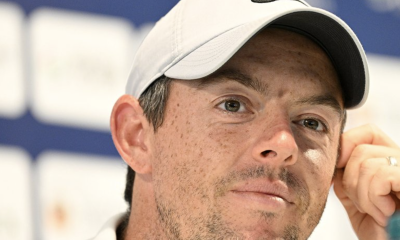
 19th Hole4 days ago
19th Hole4 days agoBrandel Chamblee says this is the primary reason why Rory McIlroy hasn’t won a major in 10 years
-

 Whats in the Bag5 days ago
Whats in the Bag5 days agoTiger Woods WITB 2024 (May)
-

 19th Hole2 weeks ago
19th Hole2 weeks agoReport: LIV star turns down PGA Championship invite due to ‘personal commitments’
-

 19th Hole3 weeks ago
19th Hole3 weeks agoGary Player claims this is what ‘completely ruined’ Tiger Woods’ career
-

 Equipment2 weeks ago
Equipment2 weeks agoDetails on Justin Thomas’ driver switch at the Wells Fargo Championship
-

 News2 days ago
News2 days agoScottie Scheffler arrested, charged, and released after traffic incident at Valhalla
-

 Whats in the Bag3 weeks ago
Whats in the Bag3 weeks agoTeam McIlowry (Rory McIlroy, Shane Lowry) winning WITBs: 2024 Zurich Classic
-

 Whats in the Bag2 weeks ago
Whats in the Bag2 weeks agoKeegan Bradley WITB 2024 (May)



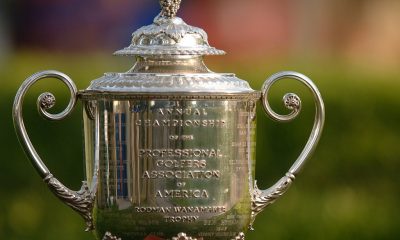

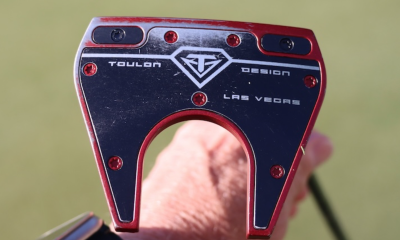

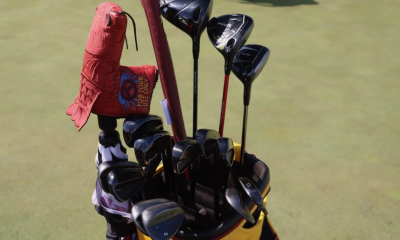

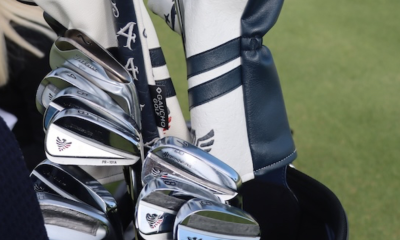










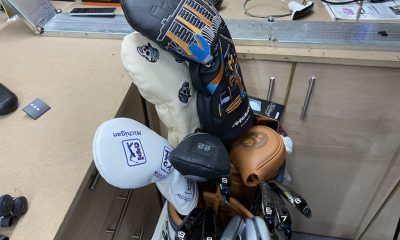

Chisag
Jun 29, 2018 at 11:33 am
99% of the 65% that should be playing more forgiving irons can be found in the MB threads on RX.
Mike Mason
Jun 27, 2018 at 11:55 pm
I have attempted to get fitting/evaluation at 2 local SoCal fitters and all they wanted to was to sell me a new set right away. I have XR pro irons and XR16 driver it’s hard to believe they need to be replaced. Tuned or adjusted yes but replaced..? If any honest fitters are in the Inland Empire,Orange County or San Deigo and are willing to evaluate/adjust rather then just replace every thin I’m Willing to try again.
Mike
Bob Jones
Jun 27, 2018 at 4:48 pm
I average 83 for 18 holes. The new technology would have to cut that down to 77 or 78 by itself for me to be interested in investing $1,400 for new irons and a new driver. I know that’s asking a lot, but if the difference would be only two or three strokes, I have much better uses for that $1,400.
BTW, I play a Titleist 975D driver and Hogan Apex Red Line irons.
John
Jun 27, 2018 at 2:28 pm
Not buying that irons need to be replaced every 2 years. I just bought a set of 1970 hogans and honestly they fly the same distance and have better dispersion than my “fitted” callaways.
The Dude
Jun 27, 2018 at 8:15 pm
you and you only…………. are the exception. Can I ask WHY!!!>>>you bought a set of 70s BH’s..???
Spitfisher
Jun 27, 2018 at 1:41 pm
” In your own words, what is the biggest mistake golfers have in their bag when they come to you for a fitting?”
Noticeably absent to this question and one that I get a lot as a fitter of 1000s per year. Amatuers need the eradicate the idea of what a set make up is. Clubs need to be gaped accordingly. An inline 50* gap wedge ( part of a set) may go 12-15 yards longer than a vokey , cleveland wedge in the same loft. An amateur may have both a 5 hybrid and 5 iron Players have the misconception that a new driver or irons will always go further than their last. I’m looking at consistency and dispersion which is far more important than long and inaccurate. Head, shaft, lie, loft, length all play a role in this.
joro
Jun 27, 2018 at 10:23 am
Having been a club maker, fitter, teacher and player I have found and believe that a well fitter set does more for the game than a lesson. I would and did recommend that a player get his/her clubs fitted properly and then take some lessons. After that retune the clubs to adjust to whatever the swing has become. As for the Driver, it changes and they get better year after year. If you like the head, and they are all up to max, a shaft change could do the trick without the expense of a whole new club.
these fixes can make a big difference but depends on your time and desire to play better. You have to practice what you have been taught and most don’t.
Tourgrinder
Jun 27, 2018 at 9:34 am
Not all fitting pros and clubfitters are simplistic, but many are. As an advertising and promotional writer, I used to work with many pros helping to write and create some ads and brochures for their services. Head pros and teaching pros at courses are still the best in my opinion. As an injured player who now only plays 6-10 times a year, I already know my clubhead speed probably doesn’t “fit” with a stiff shaft, either woods or irons. Yet, I’m willing to give up some distance for the definitely improved accuracy and dispersion pattern. However, recently I went into one of the “big box” golf retailers just for fun. The “fitting pro” was a young 20-something who asked me to take one or two swings with a couple demo clubs, then told me I was XX mph on the clubhead speed monitor and THIS (whippy regular shaft) was the ideal shaft for me. Then he told me the specific brand of driver I should buy, (most likely because that was the brand that needed moving that day). And that was my more recent fitting experience. I didn’t buy anything. On the other hand, my first fitting experience was with a pro at a major golf club in the area…out on their grass range with an entire set of demo fitting clubs and various shaft flexes. It took about an hour and even then the customizing of the lie angle still needed tweaking. I would say proper fitting rarely happens that way today and probably happens more like the big-box store experience. Lesson to be learned: golfers still should be trying various clubs and shafts on grass ranges, looking at carry distance; launch angle and “window” by sight, not just monitor; and also dispersion pattern by shaft and clubhead type. Computer monitor stats are a good place to start, not start and finish.
Matt
Jun 26, 2018 at 8:21 pm
Geeeezus, who did the graphic design for this article? A serial killer?
SV
Jun 26, 2018 at 2:12 pm
It is not a surprise fitters think clubs should be replaced every 1-3 years, you have to keep the money coming in. Other than maybe wedges, I would think a 5 year turn on clubs would be sufficient for most people. A putter could last forever(or 1 round depending on how faithful it is). I am thinking of an average golfer with a 15-20 handicap playing 15 to 25 times a year, not a tournament player.
juststeve
Jun 26, 2018 at 10:45 am
Question 11. What a surprise, fitters thing fitting will result in quicker improvement than lessons. I wonder what teachers would think.
SG
Jun 26, 2018 at 1:11 pm
Even knowing they are biased, it’s telling that 25% don’t think equipment will lead to fast improvement.
Thomas A
Jun 26, 2018 at 3:43 pm
Well, quicker is the key word. Carrying out the result of a lesson could take time.
Bobtrumpet
Jun 26, 2018 at 5:51 pm
Considering that (1) many teachers are also fitters, or at least understand the importance of clubs that fit the player, and see the improvement when the player is using properly fit equipment, and (2) knowing how most students don’t bother practicing what they are taught in lessons, many (most?) would probably agree with the fitters. 🙂
joro
Jun 27, 2018 at 10:26 am
A lot of “Teachers” I have seen have no clue how to really teach or fit.
The Dude
Jun 27, 2018 at 8:20 pm
what’s “A Lot??”
Tom Wishon
Jul 10, 2018 at 5:36 pm
Based on having taught many educational seminars on clubfitting to PGA pros around the world during my career, I will put the number of teaching pros who cannot fit properly at 90% at least. And that’s being kind, it really is. It’s because the vast majority of pros get very poor fitting instruction in their training curriculum for membership. But another problem with that is the fact that so many pros think they know how to fit just because they themselves are good players. Wrong.
Europe is getting better at this but not the US PGA. When OEMs donate money to the US PGA sections for the pros to be able to tee it up in sectional events for a little cash, that buys the PGA’s loyalty to not seek out proper fitting instruction in their member training curriculum. The other way is by giving the pro a nice big bag with his name on it. Why piss off the hand that feeds you by teaching the pros how bad 45-46″ drivers are, how bad 43+” 3-woods are, hybrids that are too long, irons that are too low in loft and custom programs that mainly feature $200+ shafts and little else.
You’d think pros would at least be trained and encouraged to fit and bend lie on irons. If you told me 10% of the pros owned a LL machine, I’d raise the eyebrows in serious skepticism at that. If 10% own an LL machine, I’ll bet less than half use it or know how to. If the pros knew decent fitting knowledge there would be no such thing as 45-46″ drivers, adjustable hosels, iron sets with anything lower than a 5 iron and on and on.